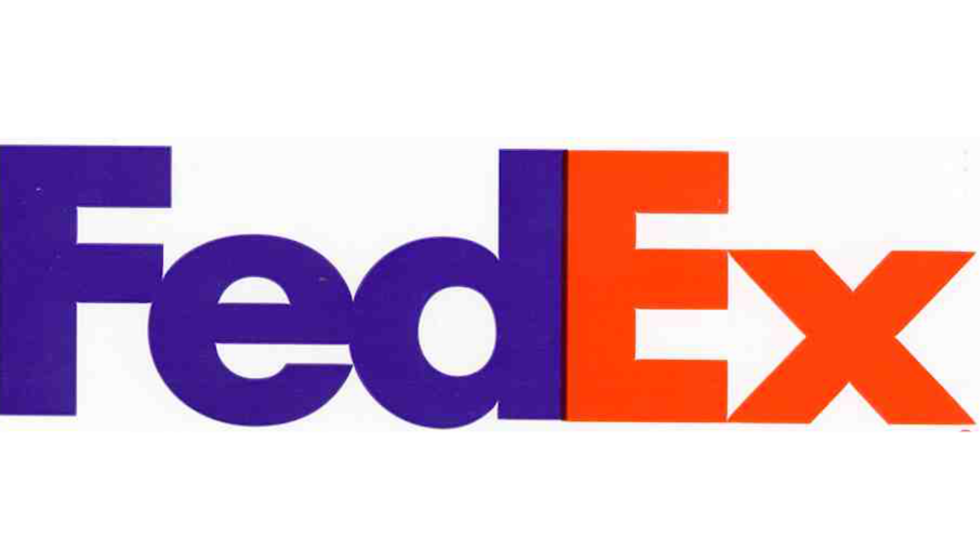
BY THE EDITORS |
Tribeca Disruptive Innovation Awards: Lindon Leader's Logos
Take a look at some of the iconic logos imagined by 2014 Tribeca Disruptive Innovation honoree Lindon Leader.

(Note: this post originally appeared on the Tribeca Disruptive Innovation Awards blog. Follow them there (and on Twitter!) for more exciting interviews/profiles with Disruptor Foundation Fellows such as this one.)
Disruptor Foundation Fellow Lindon Leader has created some of the most iconic and memorable logos in the history of marketing. We are honored to run his "situation-challenge-solution" brief for some of his favorites. 
Technicolor
North Hollywood, CA
The Situation: Re-branding a Hollywood icon
Technicolor’s enviable heritage traces back to 1915 when the company pioneered color film processing for the motion picture industry. Over time, however, competitors began offering faster and less expensive production services. As Technicolor expanded into video duplication in the 1980s and distribution in the 1990s, it became apparent that a revitalized brand was required to better communicate the breadth of Technicolor’s diverse, state-of-the-art services.
The Challenge:
Research revealed that while the company’s products and services had little awareness outside the film industry, the Technicolor brand name had continued to carry strong positive associations: Vibrant, high quality color and technical innovation. These qualities were not being communicated through the company’s visual identity, nor were the company’s diverse services. The Solution: Emphasizing the significant equities in the Technicolor brand name, the new identity is inspired by the Aurora Borealis, the Northern Lights. The brilliant spectrum of color, suggesting Technicolor’s broad array of offerings, is rendered in the shape of a marquee, reinforcing the company’s motion picture heritage. The shape also suggests a film strip or videotape.

Federal Express
Memphis, TN
The Situation: Re-asserting industry leadership
Federal Express Corporation invented the overnight shipping business in 1973. At the time, the market was one-dimensional: One country (USA), one package type (letter), one delivery time (10:30 am). By 1992, Federal Express had added new services and was shipping packages and freight to 186 countries. Further, a proliferation of competitors offering similar services created the perception of a parity industry driven by price. The most expensive, Federal Express was losing market share.
The Challenge:
A global research study revealed that customers were unaware of Federal Express’ global scope and full-service capabilities, believing that the company shipped only overnight and only within the United States. Federal Express was advised to better communicate the breadth of its services and to leverage one of its most valuable assets—the FedEx brand.
The Solution:
The bold FedEx identity conveys the dynamic attributes that maintain FedEx leadership. The system allows for better consistency and greater impact in an array of applications ranging from packages and drop boxes to vehicles, aircraft, customer service centers and uniforms.

Hawaiian Airlines
Honolulu, HI
The Situation: Honor the past while looking forward
85 year-old Hawaiian Airlines operates within the State of Hawai‘i and to the Western United States. In 2000, an important part of an image revitalization was the replacement of the airline’s aging inter-island fleet of DC-9s with the new Boeing–717. The 30-year-old livery was deemed no longer contemporary and would not adequately reflect the company’s spirit of renewal and commitment to superior performance.
The Challenge:
Develop a new livery for the Boeing–717 that “honors the past, while looking forward” and which leverages the special qualities that define the State of Hawai‘i as a unique, diverse and beautiful destination. The revitalization should speak equally to the company’s employees, the citizens of Hawai‘i and to the flying public at large.
The Solution:
Nicknamed “Pualani” (flower of the sky), Hawaiian’s island girl is depicted in a more realistic, more genuine way, in keeping with the current Hawaiian cultural renaissance that has revived dance, music, language and other native traditions. Pualani is young and idealistic. She is feminine, yet strong. She is, at once, worldly and sublime. A penetrating gaze bespeaks confidence in a bright future for her, Hawaiian Airlines and the State of Hawai‘i. The three-quarter pose requires one to look slightly up at her as, fittingly, one would to a "flower of the sky."
NCAA
Indianapolis, IN
The Situation: Redefining a proud American institution
In 1998 the NCAA faced a number of issues, among them: Pressures on its student-athletes to excel were making a normal, balanced collegiate experience increasingly difficult to attain; broadened exposure through expanded cable coverage was offset by the new entertainment and recreation alternatives available to an affluent public. Talk of a “super division” of Division I football schools continued to undermine NCAA relevance and research revealed the NCAA was seen primarily to be about the Final Four, rule-making, enforcement and heavy-handedness.
The Challenge:
The NCAA was advised to better emphasize the “student” in student-athlete to offset widespread sentiment that the NCAA was little more than a highway to professional sports. The NCAA must develop a branding strategy and refreshed visual identity that showcases the student athlete and powerfully projects the desired attributes of organization-wide stability, strength, integrity, responsiveness and innovation. In the process, the NCAA must identify opportunities to obtain operational efficiencies in implementing a uniform brand expression throughout the organization.
The Solution:
The organization accepted the recommendation to formalize “NCAA” as its communicative name and has built a communications strategy around a refreshed graphic identity.

Motorola
Schaumburg, IL
The Situation: Revitalizing an American power brand
In an internal study presented to executive management, the Motorola Consumer Business Office reported that Motorola at the time had no master brand strategy for projecting consistent messages to consumers; was burdened with an outdated and inefficient identity system; and lacked a distinctive design program to appeal specifically to consumer audiences.
The Challenge:
The inefficiency of Motorola graphic guidelines had become increasingly apparent as stand-alone addenda were regularly generated to stem the tide of company-wide non-compliance. A one-company look must be created by providing better direction and support for Motorola’s coordinated return to the consumer marketplace, while retaining the strengths and strategies of Motorola’s several independent businesses.
The Solution:
A comprehensive Motorola Integrated Communications Handbook guided users toward effective communication as well as providing inspiration to achieve overall excellence in the implementation of brand management principles. Ultimately, the program embraced the recommendation to subtly embolden the Motorola logo that today improves its functionality in application across a vast array of products and communications.

DoubleTree Hotels
Phoenix, AZ
The Situation: Redefining hospitality nationwide
DoubleTree Hotels had a poorly defined image and a middle-of-the road positioning. Catering primarily to the business traveler in the western United States, DoubleTree was mired between the less expensive chains (Embassy Suites and Courtyard by Marriott) and the more up-scale hotels such as Westin and Hyatt. Committed to building the franchise into a national player, DoubleTree began focusing on better differentiating the brand in the marketplace while expanding into new geographic regions.
The Challenge:
A significant upgrade of DoubleTree flagship hotels and phased improvement of second-tier properties would help reposition the company on par with the more upscale national chains. Research revealed that while the DoubleTree’s twin tree identity had positive equity, its graphic style was dated and difficult to reproduce.
The Solution:
The simplified and understated DoubleTree symbol builds on the equity of the twin trees and better connotes the connection of the Hotel to its customers. The interlocking trees also heralded the merger of Doubletree Hotels and the east coast’s Guest Quarters Suites, under the now national DoubleTree brand.
Logos and text copyright Lindon Leader
Lindon Leader is a Disruptor Foundation Fellow and was a 2014 Honoree at the Tribeca Disruptive Innovation Awards. Over a thirty-year career in strategic branding Lindon has developed logos and corporate identities for FedEx, CIGNA, Technicolor, Walt Disney, Hawaiian Airlines, Avery Dennison, Ryder Systems, and Progress Energy, among many others. Beginning his career with the legendary designer Saul Bass, Lindon has served as design director for the Los Angeles Olympic Organizing Committee, as senior design director for Landor Associates and as executive creative director for Addison. Since 2001, he has built a successful strategic design consultancy in Park City, Utah where he continues to serve the branding needs of clients around the world. After degrees in Political Science from Stanford University and Advertising Design from the Art Center College of Design, Lindon has received over 30 major design awards worldwide. His work has appeared in numerous publications and is included in the permanent collection of the Smithsonian Institution.
